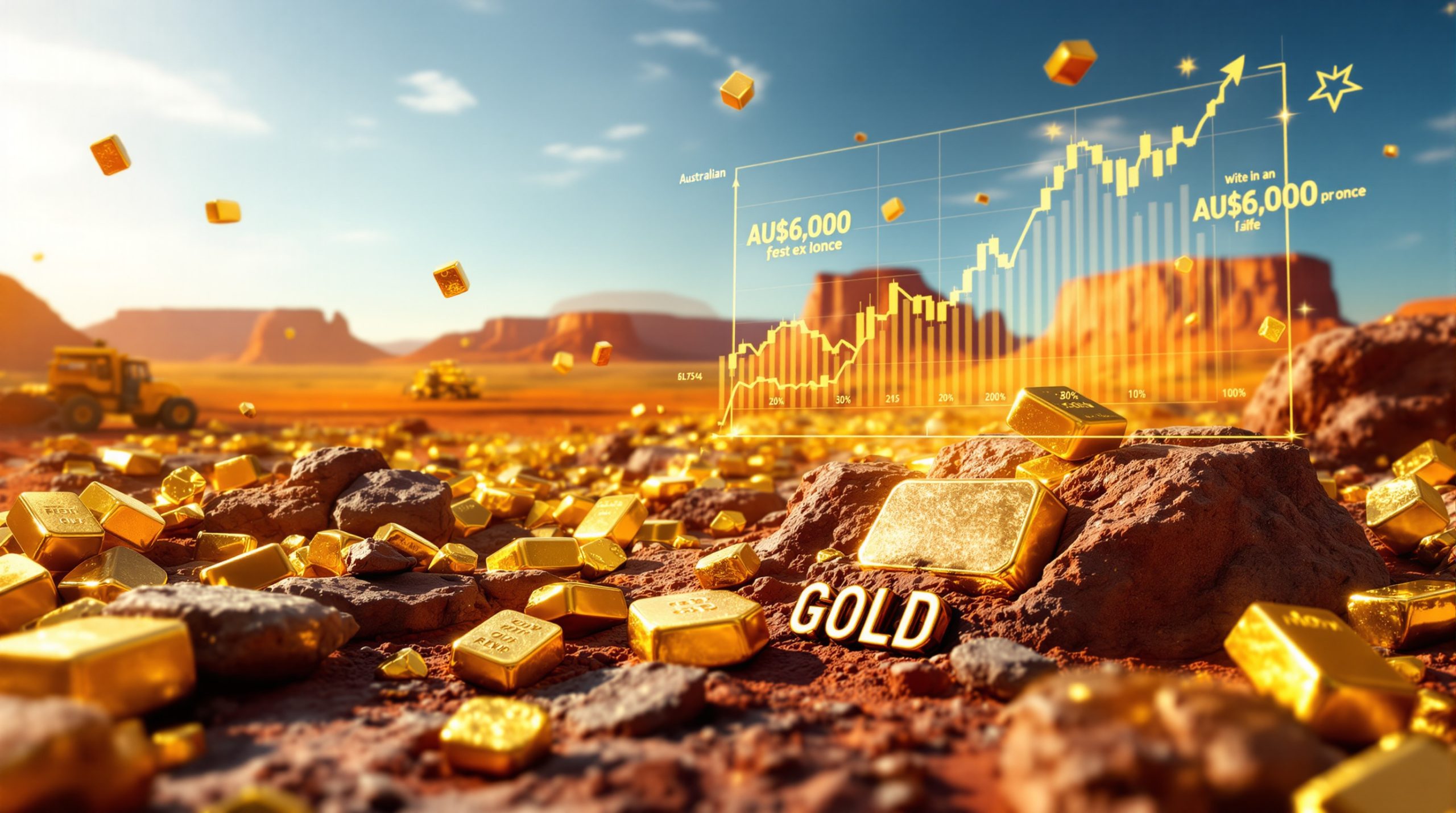The Cosmic Origins of Gold: From Star Explosions to Earth's Crust
Gold's journey from cosmic origins to human hands spans billions of years and involves some of the universe's most extraordinary events. This precious metal, coveted throughout human history, traces its beginnings not to Earth but to violent celestial phenomena occurring long before our planet formed.
What Are the Cosmic Origins of Gold?
How Gold Forms in the Universe
Gold requires exceptional cosmic conditions for its creation. Unlike lighter elements formed during normal stellar fusion, gold atoms emerge only during nature's most extreme events. Current astrophysical understanding points to several cosmic phenomena responsible for gold formation:
Neutron star collisions represent the primary gold-creating events in the universe. When these ultra-dense stellar remnants spiral together and merge, they create the perfect environment for rapid neutron capture nucleosynthesis (r-process), generating significant quantities of heavy elements including gold.
Supernova explosions, particularly certain types where massive stars collapse and then violently explode, create conditions where neutrons can rapidly combine with atomic nuclei to form heavier elements like gold.
Exotic events such as magnetorotational supernovae—where stars collapse and explode with strong magnetic fields and rapid rotation—may also contribute to cosmic gold production through r-process nucleosynthesis.
The fundamental mechanism behind gold formation—r-process nucleosynthesis—requires environments with extraordinary neutron densities that can overcome the strong repulsive forces between atomic nuclei. These conditions exist only momentarily during cosmic catastrophes, making gold production a rare cosmic occurrence.
Gold's Journey to Early Earth
Earth's initial gold inventory arrived during its formation approximately 4.5 billion years ago:
Most primordial gold sank toward Earth's molten core due to its high density during the planet's early formation, explaining why gold is relatively scarce in the accessible crust.
The majority of gold accessible in Earth's crust today likely arrived later during what scientists call the "Late Heavy Bombardment" period (approximately 4.1-3.8 billion years ago), when numerous asteroid mining advances and comets impacted the young Earth.
Meteorites and asteroids delivered additional gold-bearing material, effectively "reseeding" Earth's crust with precious metals that would otherwise have remained trapped in the core.
Research from isotopic analysis suggests that much of Earth's gold arrived via this cosmic delivery system, explaining both its relative rarity and its uneven distribution in the planet's crust.
How Do Primary Gold Deposits Form?
Hydrothermal Vein Formation
Primary gold deposits form through complex geological processes involving heat, pressure, and fluid movement:
| Deposit Type | Formation Process | Typical Characteristics | Notable Examples |
|---|---|---|---|
| Orogenic gold deposits | Form during mountain-building processes as fluids migrate through rock fractures | Quartz-carbonate veins with visible gold | Bendigo (Australia), Mother Lode (California) |
| Epithermal deposits | Near-surface hydrothermal activity in volcanic regions (< 1.5 km depth) | Associated with silver, copper; bonanza grades possible | Hishikari (Japan), Waihi (New Zealand) |
| Carlin-type deposits | Hot fluids dissolve gold and redeposit it in carbonate rocks | Microscopic "invisible gold" requiring chemical extraction | Nevada's Carlin Trend |
| Porphyry deposits | Associated with intrusive igneous rocks | Low-grade but massive tonnage | Grasberg (Indonesia), Bingham Canyon (Utah) |
These primary deposits develop through several critical mechanisms:
Tectonic activity creates fracture networks that serve as pathways for gold-bearing fluids.
Magmatic intrusions provide heat sources that drive hydrothermal circulation.
Chemical reactions between fluids and host rocks cause gold precipitation when conditions like temperature, pressure, or chemistry change.
The efficiency of these processes determines whether economically viable concentrations form or if gold remains too dispersed for profitable extraction.
World's Most Significant Primary Gold Regions
Several regions host exceptional primary gold deposits that have profoundly influenced human history:
Witwatersrand Basin, South Africa: Earth's most productive gold field, accounting for approximately one-third of all gold ever mined. Unlike typical primary deposits, the Witwatersrand formed through unique sedimentary processes approximately 2.8 billion years ago when gold particles were deposited in ancient river systems and later buried and preserved.
Carlin Trend, Nevada: Discovered in the 1960s, this 50-mile-long belt contains microscopic "invisible gold" within sulfide minerals. These deposits required technological innovations in extraction methods to become economically viable, demonstrating how geology and technology interact in resource development.
Eastern Goldfields, Western Australia: Home to the famous "Golden Mile" in Kalgoorlie, this region has produced over 2,000 tonnes of gold since discovery in 1893. The deposits formed approximately 2.7 billion years ago during a major period of continental collision and volcanic activity.
Timmins-Porcupine, Ontario: Located within the Abitibi greenstone belt, this region has produced over 2,000 tonnes of gold from deposits formed during ancient tectonic events approximately 2.7 billion years ago.
How Do Secondary Gold Deposits Form?
The Formation of Placer Gold Deposits
When primary deposits erode, they create secondary concentrations through natural sorting processes:
Weathering slowly breaks down gold-bearing rock, liberating gold particles that persist due to their chemical stability and resistance to oxidation.
Gold's exceptional density (19.3 g/cm³) causes it to settle quickly in water environments while lighter materials wash away.
Water action concentrates gold particles in specific locations:
- Inside bends of rivers where water velocity decreases
- Behind natural obstructions like boulders or tree roots
- Within crevices and natural traps in bedrock
- At the base of waterfalls where turbulence drops heavier particles
This natural concentration mechanism creates placer deposits containing gold in forms ranging from microscopic dust to spectacular nuggets weighing several kilograms. The largest documented gold nugget, the "Welcome Stranger" found in Australia in 1869, weighed 72.02 kg (2,316 troy ounces) and came from a placer deposit.
Historic Gold Rushes and Placer Mining
Placer deposits triggered transformative gold rushes throughout history:
California Gold Rush (1848-1855): Began with James Marshall's discovery at Sutter's Mill and brought approximately 300,000 people to California. San Francisco transformed from a settlement of about 200 people in 1846 to a booming city of 36,000 by 1852. This population explosion accelerated California's statehood and reshaped North American demographics.
Victorian Gold Rush (1850s): Catalyzed by discoveries at Ballarat and Bendigo, this rush increased Australia's population from 437,000 in 1851 to 1.2 million by 1861. Melbourne became one of the world's wealthiest cities, and the democratic reforms sparked by the Eureka Stockade rebellion helped establish Australia's political identity.
Klondike Gold Rush (1896-1899): Drew over 100,000 prospectors to the remote Yukon Territory despite harsh Arctic conditions. Only about 4,000 actually found gold, illustrating the economic risk of gold fever. The rush accelerated development of Alaska and northwest Canada while inspiring literary works like Jack London's "Call of the Wild."
These historic rushes demonstrate how geological processes directly influenced human migration patterns, economic development, and political systems. The technological progression from simple panning to hydraulic mining and dredging also showcases how innovation follows resource discovery.
How Does Plate Tectonics Influence Gold Distribution?
Tectonic Settings Favorable for Gold
Gold deposits follow specific tectonic patterns rather than random distribution:
Subduction zones create ideal conditions for gold mineralization. When oceanic plates slide beneath continental plates, they release water and minerals at depth, creating magmatic arcs rich in gold. The Pacific Ring of Fire hosts numerous major gold deposits due to this process.
Continental collision zones generate mountain belts with extensive fracture networks where gold-bearing fluids can circulate. The Himalayan-Tibetan orogen contains significant gold mineralization formed during the collision of the Indian and Eurasian plates.
Ancient cratons—stable continental cores—preserve gold deposits formed billions of years ago. These geological time capsules, like the Canadian Shield, contain some of the world's oldest and richest gold provinces.
These tectonic environments create the necessary conditions for gold concentration through:
- Heat sources (magmatism or deep burial) that drive fluid circulation
- Structural pathways (faults and fractures) that facilitate fluid movement
- Chemical traps (reducing environments or reactive rocks) that precipitate gold from solution
The intersection of these factors in space and time determines whether economically viable gold deposits form.
Global Gold Distribution Patterns
The world's gold resources follow distinct geological patterns reflecting Earth's tectonic history:
Pacific Ring of Fire: This active tectonic boundary hosts major gold deposits in Indonesia, Papua New Guinea, Philippines, western North America, and the Andes. The Grasberg mine in Indonesia, positioned along this belt, contains one of the world's largest gold reserves.
Ancient shield regions: Some of Earth's oldest and richest gold deposits occur in stable cratons in Canada, Australia, and Africa. These regions, formed over 2.5 billion years ago, contain exceptionally preserved gold mineralizing systems.
Orogenic belts: Mountain-building zones like the Alps, Himalayas, and Andes contain significant gold mineralization. The Tethyan Metallogenic Belt, stretching from Europe through Turkey and Iran to Southeast Asia, represents one of the world's most important gold provinces.
This uneven distribution explains why certain countries dominate global gold prices analysis despite having relatively small land areas. Australia, Russia, and South Africa contain disproportionately large gold reserves due to their favorable geological histories.
What Unconventional Gold Sources Exist?
Oceanic Gold Resources
Beyond traditional land-based deposits, the oceans hold significant gold resources:
Seawater gold: Every cubic kilometer of seawater contains approximately 13 kg of dissolved gold at concentrations of about 13 parts per trillion. While this represents an enormous theoretical resource (estimated at 20 million tonnes total), the extreme dilution makes extraction economically unfeasible with current technology.
Seafloor massive sulfides: Hydrothermal vents create mineral-rich deposits containing gold along with copper, zinc, and silver. These "black smokers" form where seawater penetrates the ocean floor, becomes heated by magma, and reemerges carrying dissolved metals that precipitate upon contact with cold seawater.
Manganese nodules and cobalt-rich crusts: These seabed formations contain trace amounts of gold along with other valuable metals. Found primarily in deep ocean environments, they form extremely slowly (millimeters per million years) through mineral precipitation from seawater.
While these oceanic sources contain enormous theoretical gold reserves, significant technological, economic, and environmental barriers currently limit their exploitation.
Technological Challenges of Ocean Mining
Extracting oceanic gold presents unique difficulties:
Extreme water pressure at depths where deposits occur (often 1,500-5,000 meters below sea level) requires specialized equipment that can withstand these conditions.
Corrosive saltwater environment rapidly damages conventional mining equipment, necessitating costly materials and frequent maintenance.
Environmental concerns about disrupting fragile deep-sea ecosystems with limited resilience and recovery capacity. Many hydrothermal vent systems host unique biological communities found nowhere else on Earth.
International legal questions about resource ownership in international waters remain unresolved. The UN Convention on the Law of the Sea and the International Seabed Authority provide frameworks, but regulatory gaps persist.
Recent pilot projects by companies like Nautilus Minerals have attempted to develop seafloor mining systems, but technical challenges and environmental opposition have slowed progress in this frontier.
How Is Gold Mined Today?
Modern Mining Technologies
Contemporary gold mining employs sophisticated technologies to extract increasingly difficult-to-access deposits:
Open-pit mining: Large-scale excavation for near-surface deposits using massive equipment like haul trucks carrying 400 tonnes and shovels that can move 100 tonnes in a single scoop. The Grasberg mine in Indonesia and Nevada's Goldstrike represent prominent examples.
Underground mining: Deep shafts and tunnels reaching depths exceeding 3.5 kilometers in South Africa's Mponeng mine. Advanced technologies like automated drilling, ventilation systems, and ground freezing enable mining at these extreme depths where rock temperatures can reach 60°C.
Heap leaching: Using dilute cyanide solutions (typically 0.05%) to dissolve microscopic gold from crushed ore placed on lined pads. This process enables economical extraction from low-grade ores containing less than 1 gram of gold per tonne of rock.
Carbon-in-pulp processing: Capturing dissolved gold using activated carbon particles that adsorb the precious metal from solution. This technique increased recovery rates from 60% to over 95% in many operations.
Bioleaching: Utilizing specialized bacteria like Acidithiobacillus ferrooxidans to extract gold from sulfide minerals. This emerging technology offers potential environmental advantages over traditional chemical methods.
Advanced exploration technologies have also revolutionized gold discovery:
- Hyperspectral satellite imaging that can detect mineral signatures from space
- Geophysical surveys using magnetometry and induced polarization to "see" beneath the surface
- Sophisticated geochemical sampling techniques detecting parts-per-billion concentrations
- Machine learning algorithms analyzing multiple data layers to identify promising targets
These technological advances allow economical mining of deposits that would have been impossible to extract just decades ago.
Environmental and Social Considerations
Modern gold mining faces growing scrutiny regarding its impacts:
Water usage: A typical large gold mine may use 7,000-9,000 cubic meters of water daily, a significant concern in water-scarce regions. Mining companies increasingly implement closed-loop water systems to reduce consumption.
Chemical concerns: Cyanide use presents potential risks if not properly managed. Modern operations typically maintain cyanide concentrations below 50 parts per million and employ destruction methods before discharge.
Land disturbance: Open pits and waste rock storage permanently alter landscapes. Progressive rehabilitation and ecosystem restoration have become standard practice at responsible operations.
Community impacts: Mining operations can displace local populations and affect cultural heritage sites. Best practices now include comprehensive community consultation and benefit-sharing agreements.
Artisanal mining challenges: Approximately 20-30 million small-scale miners worldwide operate with limited environmental controls. Mercury use in these operations contributes an estimated 1,400 tonnes of mercury pollution annually.
The industry increasingly adopts sustainability practices:
- Water recycling systems achieving up to 80% reuse rates
- Dry stacking of tailings to reduce failure risks
- Modern mine planning technology integrated from project inception
- Renewable energy adoption at remote mining sites
The World Gold Council's Responsible Gold Mining Principles and the Initiative for Responsible Mining Assurance provide frameworks for improving industry practices.
What Is Gold's Role in Modern Technology?
Beyond Jewelry and Investment
While traditionally valued for jewelry (approximately 50% of annual demand) and investment (approximately 25%), gold plays crucial roles in advanced technologies:
Electronics: Gold's exceptional conductivity and corrosion resistance make it essential in circuit boards, connectors, and memory chips. A typical smartphone contains about 0.034 grams of gold in components where reliability is critical.
Medical applications: Gold nanoparticles enable targeted cancer treatments by attaching to tumor cells and converting near-infrared light into heat that destroys malignant tissue. Gold is also used in rapid diagnostic tests, including COVID-19 tests, where gold particles create the visible line indicating a positive result.
Aerospace: Gold-coated components protect satellites and spacecraft from radiation and temperature extremes. The James Webb Space Telescope uses an ultra-thin gold coating on its mirror segments to optimize infrared reflection.
Renewable energy: Gold catalysts improve fuel cell efficiency, while gold nanoparticles enhance solar panel performance by converting more wavelengths of light into electricity. Research suggests gold nanostructures could eventually increase solar panel efficiency by up to 10%.
These technological applications highlight gold's transition from primarily decorative to functionally essential in modern society. They also create new demand sources as jewelry consumption patterns shift in major markets.
Future Gold Exploration Frontiers
As accessible deposits become scarcer, exploration pushes into new frontiers:
Deep mining: Technological advances enabling mining at previously impossible depths. The Ultra-Deep Mining Network in Canada is developing technologies to mine at depths of 2.5 kilometers and beyond, where rock pressure and heat pose significant challenges.
Remote regions: Exploration in challenging environments like the Arctic, high-altitude mountain ranges, and densely forested tropical regions. Advanced remote sensing and lower-impact exploration methods make these areas increasingly accessible.
Reprocessing waste: Extracting gold from historical mine tailings using improved recovery methods. Modern processing can recover gold from tailings containing as little as 0.3 grams per tonne, turning environmental liabilities into assets.
Asteroid mining: Long-term potential for extracting gold from near-Earth asteroids. Metallic asteroids may contain gold concentrations 10-100 times higher than Earth's richest mines. Companies like Planetary Resources and Deep Space Industries have begun developing technologies for this futuristic mining frontier.
The declining discovery rate of major new gold deposits, despite increased gold exploration drilling spending, suggests we may have found most of the "easy" gold. Future supplies will likely come from more challenging sources requiring technological innovation.
FAQs About Gold's Origins and Distribution
How old is the gold found on Earth?
Gold atoms were created billions of years ago in cosmic events like neutron star collisions and supernova explosions. The gold in jewelry today contains atoms that likely formed before our solar system existed, making them over 4.6 billion years old. These atoms have remained unchanged through their cosmic journey, only being rearranged into different forms.
Why doesn't gold corrode or tarnish?
Gold's exceptional chemical stability results from its completed electron shell configuration and high electrochemical potential. This makes gold highly resistant to oxidation and other chemical reactions that cause corrosion in most metals. This property explains why ancient gold artifacts maintain their luster after thousands of years in various environments.
Which country has the largest gold reserves?
Australia currently holds the world's largest identified gold reserves at approximately 10,000 tonnes, followed by Russia and South Africa. However, production leadership differs, with China being the top producer, followed by Australia and Russia. The United States holds the largest national gold stockpile at over 8,100 tonnes, most stored at Fort Knox and the Federal Reserve Bank of New York.
Can gold be created artificially?
Yes, gold can be created through nuclear transmutation by bombarding platinum or mercury with neutrons, but this process is extremely expensive and impractical for commercial production. It requires nuclear reactors or particle accelerators and produces tiny quantities, often of radioactive isotopes. The cost of artificially producing gold exceeds its market value by orders of magnitude.
Is there really gold in seawater?
Yes, seawater contains an estimated 20 million tons of dissolved gold. However, its extremely low concentration (about 13 parts per trillion) makes extraction economically unfeasible with current technology. Various scientists have attempted to develop extraction methods since Fritz Haber's efforts in the 1920s, but none have proven commercially viable. The energy cost of processing such dilute solutions remains prohibitive.
Further Exploration
The cosmic origins of gold represent just the beginning of this element's extraordinary journey. From violent stellar explosions to the intricate biochemistry of gold-based medicines, gold continues to connect cosmic processes with human advancement. The search for gold has driven exploration, technological innovation, and scientific discovery for millennia—a quest likely to continue as long as this remarkable metal maintains its unique place in both our economies and imaginations.
Understanding gold's geological distribution and formation provides critical insights not just for resource development, but for broader comprehension of Earth's history and cosmic connections. The same principles that explain gold's concentration in specific geological settings also illuminate fundamental processes shaping our planet, from its earliest formation to ongoing tectonic evolution.
Recent research published by the Smithsonian continues to refine our understanding of how gold deposits analysis can trace cosmic origins back to specific neutron star collision events that occurred billions of years ago.
Ready to Invest in the Next Major Gold Discovery?
Discover significant ASX-listed gold opportunities before the market with Discovery Alert's proprietary Discovery IQ model, which transforms complex mineral data into actionable insights. Understand why historic discoveries can generate substantial returns by visiting Discovery Alert's dedicated discoveries page and begin your 30-day free trial today to position yourself ahead of the market.




